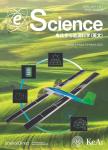Intermetallic-driven highly reversible electrocatalysis in Li–CO_(2) battery over nanoporous Ni_(3)Al/Ni heterostructure
作者机构:Institute for Advanced Interdisciplinary Research(iAIR)School of Chemistry and Chemical EngineeringCollaborative Innovation Center of Technology and Equipment for Biological Diagnosis and Therapy in Universities of ShandongUniversity of JinanJinan250022China Department of Materials Science and EngineeringNational University of SingaporeSingapore117574Singapore Institute of Materials Research and EngineeringA*StarSingapore138634Singapore
出 版 物:《eScience》 (电化学与能源科学(英文))
年 卷 期:2023年第3卷第3期
页 面:79-88页
学科分类:07[理学] 070304[理学-物理化学(含∶化学物理)] 0805[工学-材料科学与工程(可授工学、理学学位)] 0703[理学-化学]
基 金:This work was financially supported by the National Natural Science Foundation of China(52201254) the Natural Science Foundation of Shandong Province(ZR2020QE012,ZR2020MB090) the project of“20 Items of University”of Jinan(202228046) the Taishan Scholar Project of Shandong Province J.W.acknowledges the support of the Singapore Ministry of Education,for research conducted at the National University of Singapore(Tier 1,A-8000186-01-00).
主 题:Ni_(3)Al intermetallic Nanoporous Li-CO_(2)batteries Dealloying
摘 要:Li–CO_(2) batteries,which integrate CO_(2) utilization and electrochemical energy storage,offer the prospect of utilizing a greenhouse gas and providing an alternative to the well-established lithium-ion batteries.However,they still suffer from rather limited reversibility,low energy efficiency,and sluggish CO_(2) redox reaction kinetics.To address these key issues,a nanoporous Ni_(3)Al intermetallic/Ni heterojunction(NP–Ni_(3) Al/Ni)is purposely engi-neered here via an alloying–etching protocol,whereby the unique interactions between Al and Ni in Ni_(3)Al endow NP-Ni_(3)Al/Ni with optimum reactant/product adsorption and thus unique catalytic performance for the CO_(2) redox reaction.Furthermore,the nanoporous spongy structure benefits mass transport as well as discharge product storage and enables a rich multiphase reaction interface.In situ Raman studies and theoretical simulations reveal that both CO_(2) reduction and the co-decomposition of Li_(2)CO_(3) and C are distinctly promoted by NP-Ni_(3)Al/Ni,thereby greatly improving catalytic activity and stability.NP-Ni_(3)Al/Ni offers promising application potential in Li–CO_(2) batteries,with its scalable fabrication,low production cost,and superior catalytic performance.



